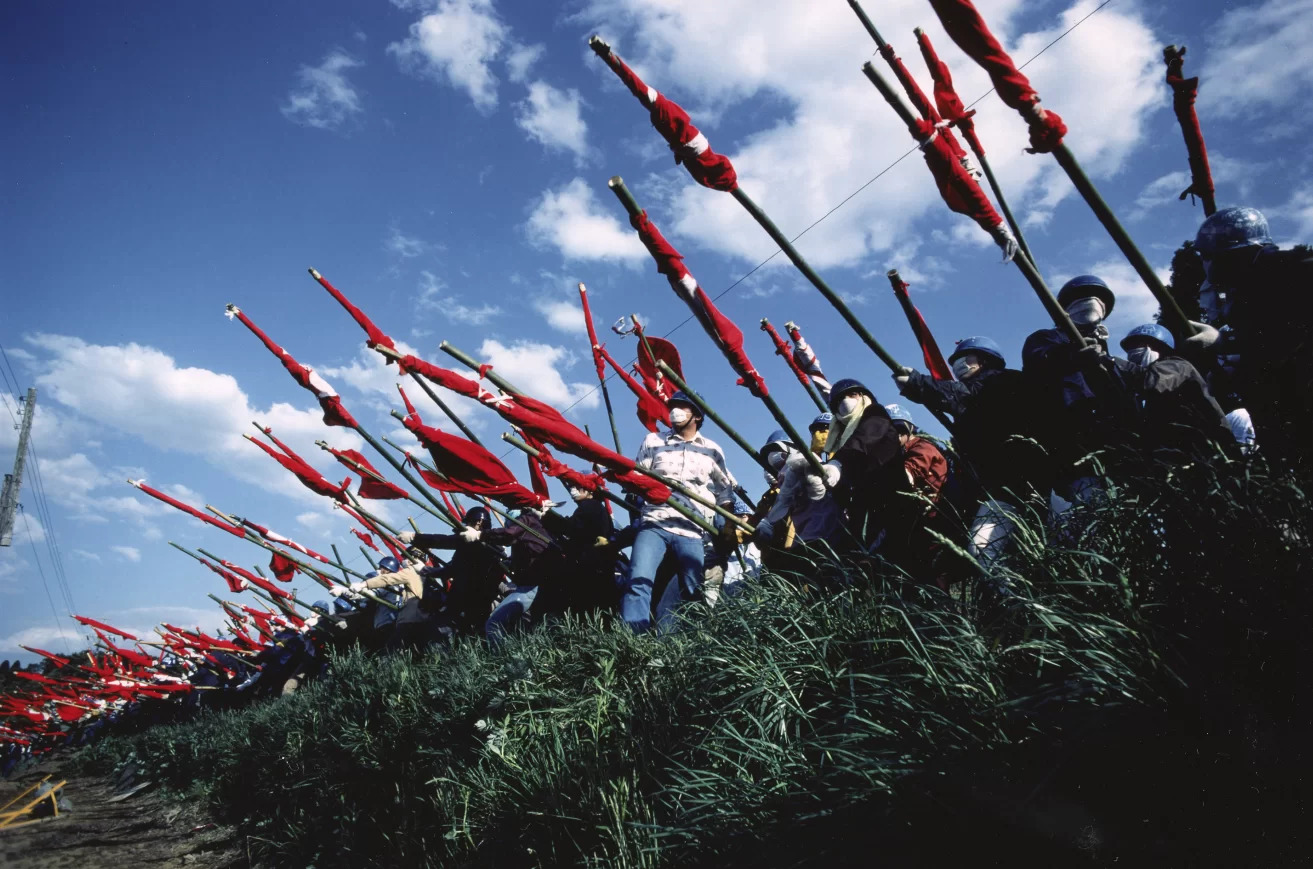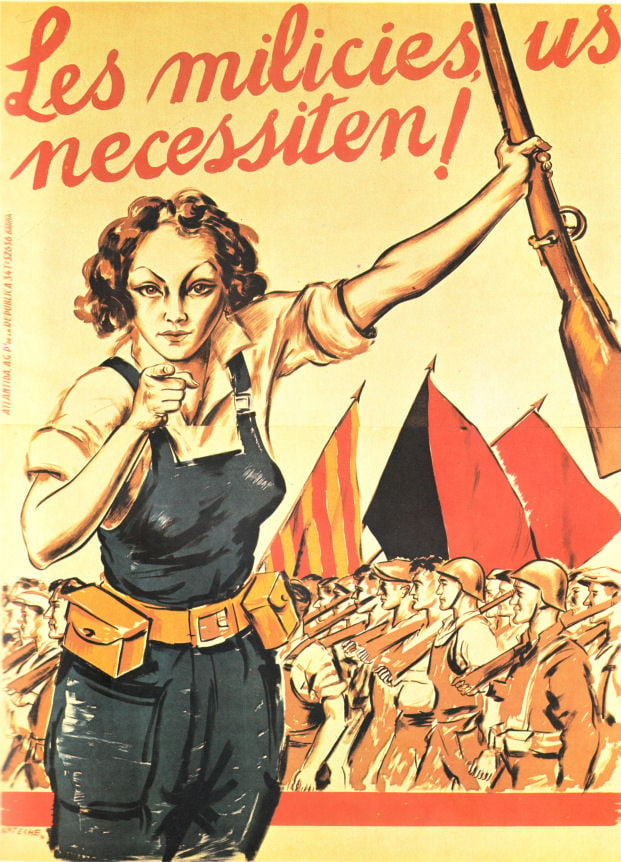Sanrizuka Struggle Begins (1966)
Wed Jun 22, 1966

Image: Helmeted demonstrators on a grassy bank, armed with flagpoles, c. 1970s. Photo credit Takashi Hamaguchi
On this day in 1966, the Japanese government announced the construction of an airport on farmland in rural Sanrizuka, without permission of displaced locals. The plans led to decades of resistance from locals in alliance with leftist groups.
The area around Sanrizuka had been farmland since the Middle Ages, and, prior to the 1940s, much of the land had been privately owned by the Japanese Imperial Household.
Many locals were economically reliant on the Imperial estate at Goryō Farm, and local farmers had a strong economic and emotional attachment to the land. After Japan’s defeat in World War II, large tracts of royal land were sold off and subsequently settled by poor rural laborers.
In the 1960s, the Japanese government planned to build a second airport in the Tokyo area to support Japan’s rapid economic development. After meeting resistance from locals on the site’s first chosen location, the rural town of Tomisato, the government was donated remaining land in Sanrizuka by the Imperial Family.
Locals in Sanrizuka were outraged when the government announced its plans. The Sanrizuka-Shibayama United Opposition League Against the Construction of Narita Airport (or Hantai Dōmei) was formed in 1966, and began to engage in a variety of tactics of resistance, including legal buy-ups, sit-ins, and occupations.
Meanwhile, the Japanese radical student movement was growing, and the League soon formed an alliance with active New Left groups; one major factor drawing the groups the together was that, under the US-Japan Security Treaty, the US military had free access to Japanese air facilities. As a result, it was likely the airport would be used for transporting troops and arms in the Vietnam War.
The demonstrators built huts and watchtowers along proposed construction sites. On October 10th, 1967, the government attempted to conduct a land survey, backed by over 2000 riot police. Clashes quickly broke out, and Hantai Domei leader Issaku Tomura was photographed being brutalized by police, further inflaming anti-airport sentiment.
Protests further grew and intensified over the next few years as the state pressed on with attempts to build the airport. Protestors would dig into the ground, build fortifications, and arm themselves against police. Construction was delayed by years, and the conflict would cost the government billions of yen.
On September 16th, 1971, three police officers were killed during an eminent domain expropriation. Four days later, police forcibly removed and destroyed the house of an elderly woman, an incident that became yet another symbol of state oppression to the opposition.
One student committed suicide, saying in his suicide note that “I detest those who brought the airport to this land”. In 1972, the protestors built a 60 meter-high steel tower near the runway in order to disrupt flight tests. Conflict continued through much of the 1970s.
In 1977, the government announced plans to open the airport within the year. In May, police destroyed the tower while demonstrators attempted to cling on to it, provoking a new wave of widespread conflict. One protestor was killed after being struck in the head by a tear gas canister. In March 1978, the first runway was set to open, but a few days prior, a group of saboteurs burrowed into the main control tower, barricaded themselves inside, and proceeded to lay waste to the tower’s equipment and infrastructure, delaying the opening yet again to May 20th, 1978.
Resistance continued after the airport was opened. Although many locals began to accept the airport and leave the land, the focus of Hantai Dōmei shifted to opposing plans for additional terminals and runways, as the airport’s current size still only reflected a fraction of initial plans.
Clashes continued through the 1980s - on October 20th, 1985, members of the communist New Left group Chukaku-ha broke though police lines with logs and flagpoles, successfully attacking infrastructure in one of the last large-scale battles of the resistance campaign. Guerilla actions and bombings continued as late as the 1990s.
Although this campaign of resistance has largely shifted out of public attention in Japan, its presence is still felt: until 2015, all visitors were required to present ID cards for security reasons, and the airport still remains only a third of its initially-planned size. The Sanrizuka Struggle has never completely ended, and the Opposition League still exists and holds rallies.
- Date: 1966-06-22
- Learn More: throwoutyourbooks.wordpress.com, en.wikipedia.org, zen-foto.jp.
- Tags: #Protests.
- Source: www.apeoplescalendar.org

